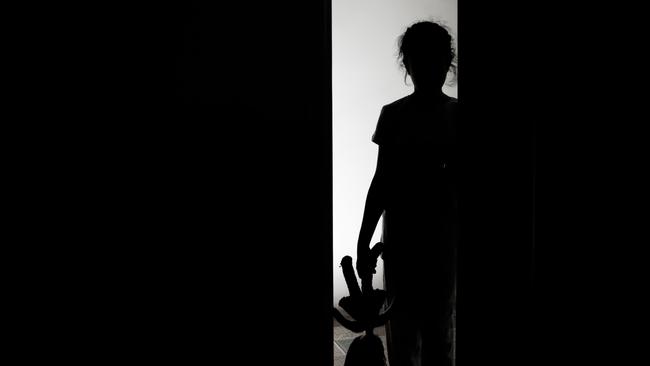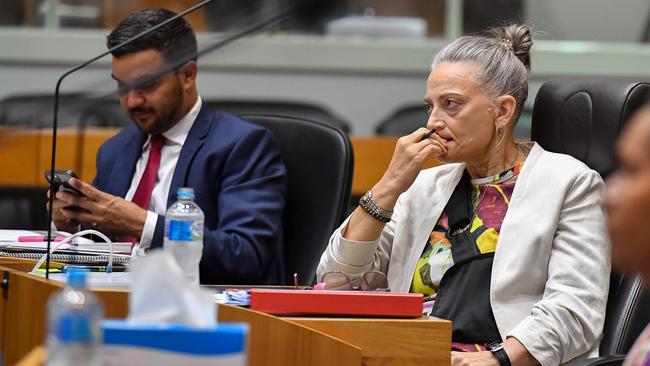NT kids four times more likely to be reported to child protection services
One per cent of Territory kids were reported as a suspected victim of abuse or neglect, under a protection order, or in out-of-home care.

Politics
Don't miss out on the headlines from Politics. Followed categories will be added to My News.
Territory children are four times more likely to be reported to protection agencies than the average Aussie kid, with higher rates of neglect and physical assault occurring in our homes.
An Australian Institute of Health and Welfare report found 45,000 Australian kids were at risk of, or were being sexually, emotionally or physically abused or neglected in 2021-22.
Territory kids were the most likely in Australia to be reported to child protective services, with 6282 children in contact with Territory Families in 2021-22.
The latest data showed 1 per cent of all Territory kids either as a suspected victim of abuse or neglect, under a protection order, or in out-of-home care.
NT children were nearly twice as likely to be in out-of-home care, and four times more likely to be reported as a potential victim of abuse than the average Australian child.
The rates of abuse and neglect in the Territory have gained the national spotlight, with federal Domestic, Family and Sexual Violence commissioner Micaela Cronin identifying the NT as a “real priority” for her department.
Last week Ms Cronin told the Senate Community Affairs Legislation Committee she was “absolutely aware of the impact and the disproportionate rates of domestic, family and sexual violence experienced in that jurisdiction”.
The AIHW data found 83 per cent of Territory kids in contact with the protection system were Indigenous, with child safety advocates warning the over-representation of Territory First Nations kids was getting worse.
Secretariat of National Aboriginal and Islander Child Care chief executive officer Catherine Liddle called for action to address the disproportionate rates of Aboriginal children being removed from their families.
“Between 2017-17 and 2020-21, the rate of over-representation of Aboriginal and Torres Strait Islander children in out-of-home care in the NT was 11.5, which grew to 13.8 times in 2020-21,” Ms Liddle said.

The AIHW found there were 30,525 harm notifications sent to Territory Families in relation to 5361 kids in 2021-22.
On average each Territory kid had five official notifications that they were potentially being maltreated.
Ms Liddle said while the number of harm notifications had increased — with nearly 5800 more reports than in 2017-18 — the number of children being referred to Territory Families had fallen.
“We know that often multiple notifications can be made for the same child, and sometimes these notifications are for relatively minor issues, such as head lice,” Ms Liddle said.
The Arrentre-Luritja woman from Central Australia said the critical figure was how many abuse allegations were substantiated.
A third of investigations found that the child was in danger, with 1330 children deemed at risk in 2021-22.
The AIHW said emotional abuse was the most common primary maltreatment, with half the kids in the NT system exposed.
A fifth of children were found to be physically abused — the highest rate in Australia.
Despite claims from federal Opposition Leader Peter Dutton and Senator Jacinta Nampijinpa Price that sexual abuse was widespread, the data showed rates of substantiated child sexual abuse in the Territory was lower than in NSW, Queensland, Western Australia, and South Australia.
The report found 86 children — 6 per cent of all substantiated cases — were sexually abused in the NT.
Ms Liddle said the AIHW findings highlighted a different and entirely “preventable” harm disproportionately impacting Territory kids.

The AIHW said NT children suffered higher rates of neglect, with a quarter of cases suffering this as the primary abuse type.
In comparison the national rate of neglect was one in five cases.
Ms Liddle said poverty and economic inequality were major drivers in child protection intervention with Territory Indigenous families.
“This is preventable and should be addressed through supporting families and children.,” she said.
Ms Liddle said there needed to be stronger investment into prevention and early supports, as well as empowering Aboriginal people and organisation to have control over child-protection decision making, and “culturally safe” child protection policies.

Territory Families Minister Kate Worden acknowledged the poverty rate was a major challenge in providing safe homes for children.
“Across the Northern Territory a lot of substantiations, under the child protection system, are due to neglect underpinned by economic and social pressures experienced by families and communities,” Ms Worden said.
“Working to address these challenges is a priority of our Government.”
Ms Worden said the government had specifically funded 13 Aboriginal organisations and one multicultural organisation to deliver culturally secure, frontline family support services.
“We know that investing in services that are focused on education, prevention and building the capacity of families and individuals to address issues on a long-term basis is critical, increasing awareness and understanding and improving outcomes,” she said.
The AIHW found the Territory had the highest rate of children being discharged from out of home care, with 251 children either returning to family or ageing out of the child protection system in 2021-22.
One in five Territory kids on care and protection orders were discharged within a month, the highest rate in the country.





